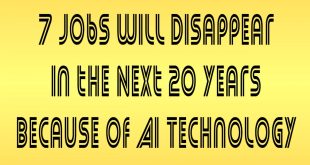Manufacturing is what has created the modern Western society that many of us live in today. The invention of the railroad, the cotton gin, electricity and mass production changed the world ever. And now we’re at the cusp of a new revolution in modern society, additive manufacturing. You probably know it by its more common term, 3D printing. In this article we about print samples of ears, houses, movie props, race cars and of course, rockets! Yes! This is the Future of Tech. We will get it right. Eventually.
want to start by answering the question aren’t 3D printers, just for nerds, printing out cheap plastic mockups of their favorite superheroes. No, let me you a give few examples. The movie industry is using 3D printing extensively for a range of tasks in Guardians of the Galaxy, the entire costume for Korath The Pursuer was printed.
The night vision goggles in Zero Dark 30 were printed, as the real thing is way too expensive. In fact, props, in general, are more and more designed a hundred percent as a digital model and then printed out when perfected. This is both much cheaper and much faster. As exciting and cool as rockets and big planes are, they are expensive and hard to make. Like crazy expensive. Yeah. So one area that is being made 60 to 90% cheaper is the production of surrogates, jigs and fixtures, surrogates being placeholders for other components, jigs and fixtures. The parts used to holding tools and supporting workpieces.
This could be a structure to hold up an airplane wing. For example, while it’s being made. It is becoming a bit of a recurring theme on the show, but Elon Musk’s Tesla is using 3D printing in building the model Y. And in general, 3D printing is used for making prototypes of new parts. This makes the process faster, more precise and cheaper.
Okay. There’s no doubt 3D printing has a lot of uses, but what you really want to know is how to 3D print ice cream don’t don’t, don’t deny it. So let’s look at the hardware and what crazy stuff is happening. If you’re after a standard 3D printer that you load some plastics spools of PLA, ABS, TPE, TPU, HIPS, or PETG into. That’s what the materials are called because we need more abbreviations, clearly. You can get a standards at-home version for, you know, a couple of hundred dollars, something that most can afford and there are a lot of them around. On the excite-o-meter, it is rating a little below average. But what if you could print a car? Yeah, a car. Israel-based Modix has created the Modular Additive Manufacturing Assembler, the MAMA and oh, mama, it sounds like something out of a transformer movie.
It can print car sized objects at several kilos per hour, even Modix calls it their personal car factory. And that rates it about Holy Moly on the excite-o-meter. Of course, it isn’t only plastic that you can use to print with, metals, carbon composites, concrete, and many biological materials too. But more than those in just a minute, what really gets the dial on the excite-o-meter all the way to something resembling a Southern American football commentator in excitement is the world’s largest prototype polymer 3D printer, which has been used to print a boat. Yeah, a boat. And we’re not talking a small dinghy with room for two, the University of Maine in the US printed, a full size 25 foot, 5,000 pound boat. And the material you ask?
A composite thermal plastic that is bio-based and made from forest products. Which are trees, right? The future of 3D printing will be powered by the cloud. Let me explain. When you print a boat or a laptop holder or a complex component for an airplane, there will be imperfections, faults, and ways it could have been done better. Currently you can only wait for the print to finish, inspect it and then adjust over and over again until you get a result that you’re happy with.
Future 3D printer hardware will have built-in scanners, which will feed the whole process to a cloud service, that will use machine learning to improve the print as it is doing well, the print. Yeah. Real-time cloud processing of prints to make the current one better than the last one. And this will increase production reliability, reduce costs even further and help the robots take over the world faster. [Inaudible]. I start here in my lab, with health. Believe it or not, 3D printing will change the future of healthcare because not only does 3D printing use plastic and metal, but it can also use organic materials. So, you could get a new ear printed. Yes, really, or new nose. Oh, that smells funny.
The company Organovo, are actively printing kidneys and livers, which one day can be a perfect replacement. Oh, what’s bioprinting well, according to the company, it is the automated fabrication of multicellular tissue via spatially defined the position of cells. Fancy. Several companies are designing and printing houses. Yes. Entire houses. The company Apis Cor has printed an entire 40 square meter house in 24 hours at a cost of $10,000. It is both durable and a hundred percent designed on a computer before being printed. The promise of cheap and unique housing that requires little maintenance is a real benefit of future 3D printing. It could improve the standard of living in many parts of the world. Yes, that is very cool. I have to end the segment with rockets. Rockets make everything better. NASA is seriously investing in 3D printing of very large rocket components, such as nozzles. They predict it will make the components more reliable and cheaper, allowing more time and ever to be spent well actually flying the rockets.
However, it doesn’t end there because the company relativity space is printing entire rockets. So what is the effect and larger-scale change to how our society is glued together? First of all, number one, the potential of 3D printing will facilitate distributed manufacturing. And as a result, bring along supply chain and logistics benefits by reducing the need for transportation, warehousing and wastage. A case study on an airplane component made using additive manufacturing for example, found that the components use saves 63% of relevant energy and carbon dioxide emissions over the course of the product’s lifetime. And that will make mother earth very happy. Second, number two, as with any major transformation, it could mean significant social upheaval.
A lot of the routine manufacturing jobs that exist today could be replaced by 3D printing to a large extent. And that would mean a lot of jobs disappearing and people needing to re-skill, maybe skill to cloud computing, shameless plug, but we are pretty good at the whole cloud education thing here at ACG. Check it out. Now, third number three as 3D printing becomes mainstream and as common as 2D printers using paper, we will start to print our own parts and tools. We will become a society of less waste as we repair, adjust and enhance everyday items.
Fourth, number four, by upvoting this episode, I can print boy episodes like our episode on space travel episodes. So you know that one Yup Or food that one, and yes, we cover 3D food printing too. 3D printing is here to stay. Technology has the ability and promise of influencing almost any industry and shake up our society, fixing broken body parts and printing anew house. It is all part of the future. So do you use a 3D printer yourself or is there another cool application that I’ve missed?
Read more article click here
 Chakri Shop Chakrishop.com
Chakri Shop Chakrishop.com



